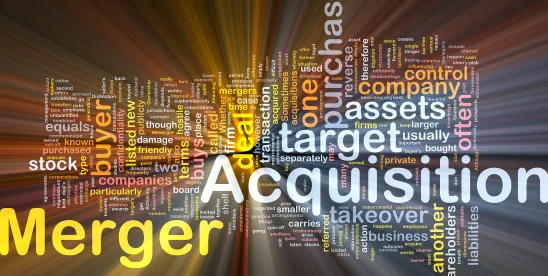Introduction
On April 12, 2024, the Treasury Department and Internal Revenue Service (IRS) issued proposed Treasury Regulations (REG-115710-22) providing comprehensive guidance for applying the one-percent excise tax owed on corporate stock repurchases occurring on or after January 1, 2023 (Stock Buyback Excise Tax). On the same day, a second set of proposed Treasury Regulations was issued (REG-118499-23) that includes procedural rules for reporting and paying the tax, recordkeeping, and penalties (together, the Proposed Treasury Regulations) for such repurchases.
Background
The Inflation Reduction Act (IRA) imposed a one-percent excise tax on the fair market value (FMV) of any stock of a covered corporation that is repurchased by such corporation during its taxable year, minus the aggregate FMV of stock issued by such corporation during that year (the Netting Rule). The statute generally defines a “covered corporation” as a domestic corporation whose stock is publicly traded on an established securities market. An established securities market for this purpose includes US national securities exchanges, certain foreign securities exchanges, regional or local exchanges, and certain interdealer quotation systems. “Repurchases” (i.e., buybacks) include a covered corporation’s acquisition of any of its stock from a shareholder for property in a transaction that qualifies as a redemption of such stock as defined in the tax Code[1] or a transaction that the Treasury determines to be “economically similar” to a redemption (subject to certain exceptions, including an exception for repurchases in connection with certain tax-free reorganizations as discussed in more detail below).
On December 27, 2022, the Treasury issued Notice 2023-2 (Notice), which provided initial guidance on the application of the Stock Buyback Excise Tax. The Notice set forth certain interim operating rules for determining the amount of Stock Buyback Excise Tax owed by a given covered corporation.
Impact on M&A Transactions
The Notice provided guidance with respect to the application of the Stock Buyback Excise Tax to redemptions of preferred stock, redemptions in complete liquidation, tax-free reorganizations, repurchases of foreign corporate stock, and leveraged buyouts (among other transactions). In general, the Proposed Treasury Regulations follow the Notice but provide additional guidance in implementing the Stock Buyback Excise Tax (including many examples).
Below is a high-level overview of how the Stock Buyback Excise Tax may impact certain aspects of M&A transactions.
Reorganizations
The Proposed Treasury Regulations generally follow the Notice and would include cash or other non-stock consideration (i.e., boot) paid to target shareholders in certain tax-deferred “acquisitive” reorganizations as repurchases economically similar to redemptions and thus subject to the Stock Buyback Excise Tax. Notably, “B” reorganizations and transactions governed by Section 351 of the Code are excluded.
The Stock Buyback Excise Tax applies to a tax-deferred reorganization regardless of whether the acquiring corporation or target corporation funds the non-stock payment. In addition, although cash paid to target shareholders in lieu of fractional shares will generally not be subject to the Stock Buyback Excise Tax, the preamble to the Proposed Treasury Regulations states that cash paid to dissenters in connection with a tax-deferred reorganization may be subject to the Stock Buyback Excise Tax depending on whether the cash is sourced from the target or the acquirer.
Leveraged Buyouts / Take Private Transactions
The Proposed Treasury Regulations are consistent with the approach of the Notice that provides that in connection with a leveraged buyout, the source of the funds determines the application of the Stock Buyback Excise Tax. The portion of consideration funded by the target corporation is subject to the Stock Buyback Excise Tax unless a statutory exception applies, while the portion of consideration funded by the acquirer is not treated as a repurchase and, therefore, not subject to the Stock Buyback Excise Tax. Therefore, a taxable acquisition of a covered corporation that is funded (completely or partially) by the covered corporation’s cash or debt will be treated as a stock repurchase by the covered corporation that is subject to the Stock Buyback Excise Tax. On the other hand, a taxable acquisition financed entirely with the acquirer’s cash (including any debt financing incurred by the acquirer) generally will not be subject to the Stock Buyback Excise Tax.
Complete Liquidations
The Proposed Treasury Regulations are generally consistent with the Notice and provide that a distribution in complete liquidation of a covered corporation and other distributions by such covered corporation in the same taxable year in which the final distribution is made generally are not treated as repurchases (regardless of whether such distributions are made pursuant to a plan of liquidation); therefore, such distribution should not be subject to the Stock Buyback Excise Tax.
However, if the covered corporation has both a corporate shareholder that owns at least 80% of the covered corporation (by vote and value) and one or more minority shareholders, then liquidating distributions made to the minority shareholders generally will be treated as repurchases subject to the Stock Buyback Excise Tax.
Section 355 Transactions
The Proposed Treasury Regulations generally follow the Notice and provide that spin-offs (i.e., a distribution of stock of a subsidiary corporation by the parent corporation to the parent corporation’s shareholders) are transactions that are not economically similar to redemptions and, therefore, are not subject to the Stock Buyback Excise Tax. Split-ups (i.e., a liquidating distribution in which the parent corporation distributes the stock of more than one subsidiary corporation) were not discussed in the Notice, but the Proposed Treasury Regulations provide that such transactions generally are not subject to the Stock Buyback Excise Tax.
However, the Proposed Treasury Regulations clarify that a distribution of non-qualifying property (i.e., boot) pursuant to a spin-off or split-up would be treated as a repurchase and subject to the Stock Buyback Excise Tax.
Unlike spin-offs or split-ups, the Proposed Treasury Regulations treat split-off transactions (i.e., a distribution by the parent corporation of stock of a subsidiary corporation in exchange for parent corporation stock) as economically similar to redemptions and are therefore treated as repurchases. However, the Proposed Treasury Regulations clarify that the Stock Buyback Excise Tax does not apply in connection with a split-off transaction to the extent that parent corporation shareholders are receiving subsidiary corporation stock in exchange for their parent corporation stock, thereby limiting the Stock Buyback Excise Tax to the extent of any boot distributed in the transaction.
SPACs
Special purpose acquisition companies (SPACs) are companies that raise equity in an IPO in order to seek out and acquire an operating business in a business combination (de-SPAC transaction). A SPAC typically will issue stock to the public in the IPO and deposit the cash received in a trust. The stock is redeemable at the option of the holder, including in connection with a de-SPAC transaction. If a business combination is not completed within a specified period of time (typically, two years), the SPAC liquidates and the cash is returned to the public shareholders.
The Notice did not provide any specific rules for transactions involving SPACs. Several commenters requested clarification or exceptions for SPACs, including exempting non-liquidating redemptions of stock by a SPAC from the Stock Buyback Excise Tax. However, the Proposed Treasury Regulations declined to adopt such exceptions as the Treasury and IRS expressed the view that the general rules sufficiently address SPACs. Therefore, the rules summarized in this alert with respect to M&A transactions (including the rules dealing with complete liquidations, as noted above) generally apply to SPAC transactions.
Importantly, under the principles of the Netting Rule, where the de-SPAC transaction involves the issuance of SPAC shares, the Netting Rule may be used to reduce or eliminate the SPAC’s Stock Buyback Excise Tax to the extent of the value of SPAC shares issued in the same taxable year, including shares issued by the SPAC to new “PIPE” investors. However, there are many situations in which the Netting Rule will not be available, such as where the redemption occurs in different taxable years than the issuance of stock in a de-SPAC transaction or where de-SPAC combination utilizes a structure in which the SPAC is not the acquiring entity, such as the “double dummy” structure. As the Proposed Treasury Regulations declined to address such situations, SPAC investors should be aware that the Buyback Excise Tax may apply to certain transactions with respect to SPAC stock.
Finally, several commenters recommended that distributions in complete liquidation of a SPAC should not be subject to the Stock Buyback Excise Tax, even if there is not a distribution in cancellation or redemption of all classes of stock. This issue arises because a SPAC sponsor typically waives with respect to their shares any redemption rights in connection with a de-SPAC transaction and any rights to liquidating distributions. Consequently, when a SPAC winds up and liquidates, the shares owned by the SPAC sponsor typically will not receive a liquidating distribution. As discussed above, the Proposed Treasury Regulations clarify that a distribution pursuant to a plan of complete liquidation or dissolution of a covered corporation generally is not a repurchase and, thus, a liquidation is generally not subject to Stock Buyback Excise Tax even if the sponsor waives its right to any distribution with respect to its stock.
Other Notable Guidance
The Notice included a “funding rule” that would impose the tax on stock repurchases by foreign corporations if they are indirectly funded by US subsidiaries for the “principal purpose” of avoiding the tax. The Notice would have imposed a rule that the “principal purpose” test is met in all cases in which the foreign corporation acquires or repurchases stock within two years of receiving funding from the US affiliate.
The Proposed Treasury Regulations replace that strict rule with a rebuttable presumption that applies only for transactions defined as “downstream” fundings that occur within two years. The presumption would apply where qualifying affiliates of a foreign corporation directly or indirectly fund a “downstream relevant entity” within two years of a stock purchase by or on behalf of that entity. A downstream relevant entity is a corporation or partnership in which one or more affiliates of an applicable foreign corporation, directly or indirectly, owns 25% or more of such entity. The presumption can be rebutted with facts and circumstances that clearly establish that avoiding the Stock Buyback Excise Tax was not a principal purpose of the funding.
Lastly, the Proposed Treasury Regulations provide a de minimis exception for the application of the Stock Buyback Excise Tax. Under this exception, a covered corporation is not subject to the Stock Buyback Excise Tax for a given taxable year if the aggregate FMV of the covered corporation’s repurchases of its stock is below $1 million during such taxable year.
Certain Reporting Requirements
The Proposed Treasury Regulations would provide that the Stock Buyback Excise Tax must be reported on the IRS Form 720, the Quarterly Federal Excise Tax Return, with the IRS Form 7208 attached. The Form 7208 would be used to figure the amount of Stock Buyback Excise Tax owed.
In line with a June 2023 IRS announcement (Announcement 2023-18, 2023-30 IRB 366), the Proposed Treasury Regulations would establish that, for taxpayers with a taxable year ending after December 31, 2022, but before the publication of final regulations, any liability for the Stock Buyback Excise Tax for the taxable year must be reported on the IRS Form 720 that is due for the first full quarter after the date the final regulations are published, and that the deadline for payment of the tax is the same as the filing deadline.
Effective Date
If finalized, the Proposed Treasury Regulations will generally apply to repurchases of stock of a covered corporation occurring in tax years ending after December 31, 2022. However, certain rules in the Proposed Treasury Regulations that had not been included in the Notice will only apply to stock repurchases taking place after April 12, 2024.
The revised rules in the Proposed Treasury Regulations relating to repurchases by foreign groups are generally applicable to transactions occurring after April 12, 2024, while the rules in the Notice would apply to transactions occurring before this date. However, a covered corporation may choose to apply the rules in the Proposed Treasury Regulations to transactions occurring after December 31, 2022, and fundings occurring on or after December 27, 2022, provided the taxpayer applies the Proposed Treasury Regulations consistently.






 />i
/>i

